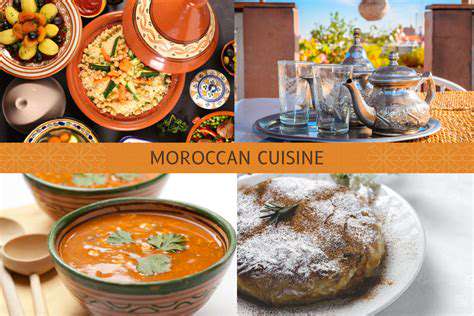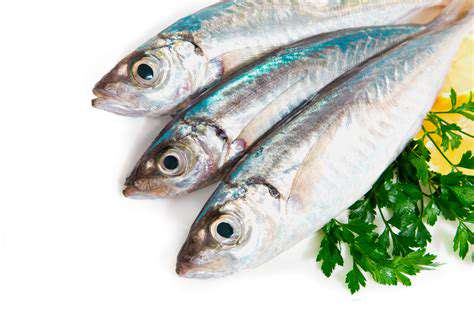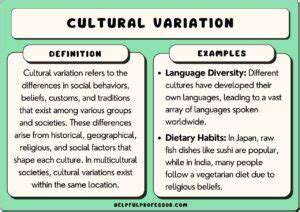Eating Habits in Morocco: Tagines and Mint Tea
Beyond the Pot: The Art of Tagine Preparation

The History and Origins of Tagine
Tagine, a culinary masterpiece from the Maghreb region, boasts a rich history intertwined with Moroccan culture. Dating back centuries, this slow-cooked dish has evolved through generations, reflecting the region's diverse influences and agricultural bounty. The very name tagine refers to the conical earthenware pot used in the preparation, signifying the dish's fundamental link to its traditional cooking method. The pot's shape, designed to trap steam and moisture, ensures tender, flavorful results.
Beyond its historical significance, tagine embodies a deep cultural connection. It's often prepared for special occasions and family gatherings, signifying a celebration of togetherness and shared nourishment. This tradition emphasizes the communal aspect of cooking and eating, fostering a sense of unity and belonging.
The Essential Ingredients: A Flavor Symphony
A hallmark of tagine's exquisite taste lies in its carefully selected ingredients. From fragrant spices like cumin, coriander, and turmeric, to tender cuts of meat, such as lamb or chicken, each element plays a crucial role in crafting the dish's unique character. Fresh vegetables, like carrots, potatoes, and onions, add a burst of freshness and nutrients, complementing the richness of the meat or protein.
Mastering the Cooking Process: A Slow and Gentle Approach
The beauty of tagine lies in its slow and gentle cooking method. This technique allows the flavors to meld together, creating a harmonious blend of tastes. The slow simmering process over low heat transforms the ingredients into a symphony of flavors, with each element contributing to the overall richness and complexity of the dish.
By employing this method, the moisture is retained, resulting in incredibly tender and flavorful results. This slow cooking process is crucial for achieving the characteristic meltingly tender textures that define a truly exceptional tagine.
Beyond the Meat: Vegetarian and Vegan Variations
The versatility of tagine extends beyond its traditional meat-based preparations. Vegetarian and vegan variations offer equally delicious and satisfying alternatives. Subbing the meat with hearty vegetables, legumes, and tofu provides a flavorful and nutritious culinary experience.
These variations allow individuals with diverse dietary needs and preferences to enjoy the rich and aromatic flavors of tagine. The slow cooking process allows vegetables to maintain their nutrients and vibrant colors, creating a visually appealing and healthy dish.
The Art of Presentation: A Culinary Symphony
Tagine is not just about the taste but also about the presentation. The vibrant colors of the vegetables, the glistening sheen of the meat, and the fragrant aroma all contribute to a visually captivating and appetizing dish. Serving the tagine in its original clay pot is a classic presentation that adds to the overall aesthetic appeal.
The beautiful presentation enhances the overall culinary experience, making it a truly memorable meal, whether enjoyed at home or in a fine dining establishment. Careful plating and garnishing, using fresh herbs, can elevate the dish even further.
Serving Suggestions and Pairing Options
Tagine is a versatile dish that can be paired with a variety of accompaniments, enhancing the overall dining experience. Freshly baked bread, such as couscous or pita, complements the flavors of the tagine, providing a delightful textural contrast. A simple salad featuring fresh herbs and vegetables offers a refreshing counterpoint to the richness of the dish.
A glass of Moroccan mint tea or a light, fruity wine can complete the culinary experience, enhancing the overall sensory experience. The careful consideration of pairing options elevates the dining experience to a new level, making tagine a truly memorable meal.
The Irresistible Embrace of Mint Tea: A Cultural Ritual
A Refreshing Tradition
Mint tea, a cornerstone of Moroccan hospitality, transcends mere refreshment. It's a ritualistic experience, steeped in centuries of tradition and cultural significance. From bustling souks to intimate family gatherings, the fragrant steam and the gentle clinking of glasses are familiar sounds, signifying warmth, welcome, and a deep connection between host and guest. The very act of preparing and sharing this beverage embodies the essence of Moroccan hospitality, inviting guests into a world of generosity and connection.
More Than Just a Drink
Beyond its refreshing taste, mint tea holds a profound cultural significance in Morocco. It's more than just a beverage; it's a symbol of generosity, hospitality, and social connection. The act of offering a cup of tea is an act of welcoming the guest into the home, a gesture that fosters trust and strengthens relationships. The careful preparation, the sharing of the tea, and the moment of conversation all contribute to a unique and unforgettable experience.
This tradition extends beyond the domestic sphere. In public spaces, mint tea is a common sight, creating a sense of community and shared experience. It's a visual representation of the Moroccan way of life, where connection and conversation are paramount.
The Art of Preparation
The preparation of mint tea is an art form in itself, a testament to the meticulousness and care that Moroccans bring to their daily rituals. Fresh mint leaves, carefully selected and often grown locally, are combined with strong, high-quality green tea. The precise ratio of mint to tea, the careful brewing process, and the distinctive method of serving each glass—all contribute to the unique flavor and aroma.
A Symbol of Generosity
Offering mint tea is not merely an act of politeness in Morocco; it's a deeply ingrained cultural practice, signifying generosity and a welcoming embrace. The host takes pride in ensuring their guests are well-cared for, and the act of offering a cup of tea is a tangible demonstration of this care. It's a way to show appreciation for the presence of guests and to cultivate a sense of belonging.
Beyond the Cup
The ritual of mint tea extends far beyond the actual act of drinking. It's a moment to connect, to build relationships, and to share stories. Conversations flow easily, and the warmth of the shared experience often transcends language barriers. In essence, the cup of mint tea becomes a catalyst for connection and a testament to the rich cultural tapestry of Morocco.
Beyond the Essentials: Exploring the Diverse Flavors of Moroccan Cuisine

Beyond the Fundamentals of Effective Communication
Effective communication isn't just about conveying information; it's about understanding and connecting with the recipient. This involves actively listening and responding thoughtfully to ensure the message is received and understood accurately. It encompasses not only verbal communication but also nonverbal cues, body language, and tone of voice, all of which play a crucial role in conveying the intended message and fostering positive relationships.
Beyond the basic elements of grammar and syntax, effective communication requires a nuanced understanding of the audience's perspective and background. Adapting your language and style to resonate with your audience is paramount for successful communication. This ensures that your message is received positively and understood clearly, fostering trust and mutual respect in the process.
Understanding Diverse Communication Styles
Recognizing and appreciating the diverse communication styles of individuals and cultures is essential for fostering effective communication in any setting. This includes recognizing differences in communication preferences, such as direct versus indirect communication, high-context versus low-context communication, and the role of nonverbal cues in various cultures.
Different cultures have unique communication norms. Understanding these nuances is crucial for avoiding misunderstandings and fostering positive relationships across cultural boundaries. Effective communication relies on respecting these differences and adapting communication styles accordingly.
The Power of Active Listening
Active listening is more than just hearing words; it's about truly understanding the message being conveyed. It involves paying close attention to both verbal and nonverbal cues, asking clarifying questions, and reflecting back the speaker's message to confirm understanding. This demonstrates respect and fosters a sense of connection, making the communication process more productive and meaningful.
The Importance of Nonverbal Communication
Nonverbal communication plays a significant role in conveying meaning and influencing how others perceive us. Body language, facial expressions, and tone of voice can significantly impact the effectiveness of a message, often communicating more than words alone. Understanding the nuances of nonverbal cues is key to effective communication, as it allows for a more complete and accurate interpretation of the message being conveyed.
Pay close attention to your posture, eye contact, and gestures, as these elements can either enhance or detract from the impact of your message. Effective communication involves being aware of and managing these nonverbal cues to ensure the message aligns with the intended meaning.
Building Trust and Rapport through Empathy
Building rapport and trust with others through empathy is vital in any communication process. Empathy involves understanding and sharing the feelings of another person, allowing you to connect on a deeper level. This understanding allows for more effective communication and fosters stronger relationships.
Demonstrating empathy in communication shows respect for the other person's perspective and experiences. This creates a safe and supportive environment for open and honest communication, leading to more meaningful and productive interactions.
Overcoming Communication Barriers
Effective communication isn't always seamless. Communication barriers, such as differing language proficiency, cultural misunderstandings, or emotional blocks, can hinder the clarity and accuracy of the message. Identifying and addressing these barriers is crucial for fostering effective communication.
Overcoming these obstacles often requires a willingness to adapt, to actively listen, and to seek clarification when needed. This proactive approach to understanding and resolving communication barriers fosters more productive and meaningful interactions.
Read more about Eating Habits in Morocco: Tagines and Mint Tea
Hot Recommendations
- Traditional Foods for Day of the Dead
- Food Etiquette in Italy: Pasta Rules!
- Best Family Friendly Restaurants with Play Areas in [City]
- Review: The Best [Specific Dessert] Place in [City]
- Top Ice Cream Parlors in [City]
- Traditional Foods for Halloween
- The History of the Potato in Ireland
- Best Vegan Pizza Joints in [City] [2025]
- Best Bakeries for Sourdough Bread in [City]
- Food Culture in Argentina: Asado and Wine







![Review: The [Specific Brand] Electric Mixer](/static/images/28/2025-06/Performance3AMixingLiquidsandDoughs.jpg)



